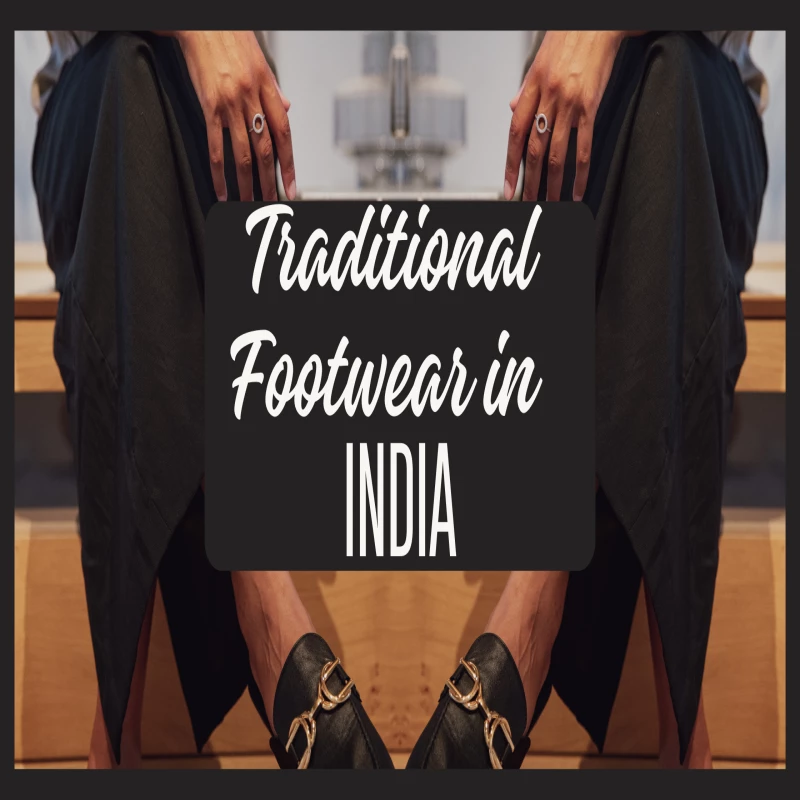
What is traditional footwear in India?
Footwear is the most common and important part of anyone's attire. One cannot imagine life without it. From protecting feet to elevating the look, they have been used for over a century. Yes, you read that right! The history of traditional Indian footwear has existed for more than a century. Today, footwear reflects the personal style and choice of the person, but back then, that was not the case. In ancient times, the significance of status, culture, and traditions kept on evolving with time.
So. Within this blog, today, we will delve deeper into the fascinating world of Indian traditional Shoes for ladies, exploring the history, types and evolution that is sure to make us spellbound.
History of Traditional Indian Footwear
While no one knows the exact date of the invention of footwear in India, it has been mentioned in pieces of literature of the Vedic period. In Ramayana, Paduka of Lord Rama is mentioned, who was left behind on his throne at Ayodhya when he left for exile. Paduka, one of the earliest Indian footwear, was only used by influential people, saints and gurus.
Another lore from history, which reflects the deeper significance of footwear is that when Buddha left his home to become an ascetic, he left footwear behind. This shows how footwear was considered akin to a luxurious and comfortable life.
Interestingly, the use of footwear in India can be proved by the evidence of flip-flops and chappals found in the archaeological sites of West Bengal dating back to 2 BCE! And that's how anyone can spot more such evidence where sculptures and statues have worn footwear.
So, after knowing such tidbits about footwear facts, won't you think it will be intriguing to know more about Indian ethnic footwear, which has been prevalent for ages?
A walk down through the footwear of India
Have a glimpse of various kinds of footwear for indian ethnic wear to know their features and significance:
-
Paduka: Derived from the Vedic word 'pada', which means foot, paduka is one of the oldest footwear inventions in Indian history. They were often made of wood with the peg between the first and second toe and body carved in foot size. During ancient times, it was given as a bride's dowry where families would hand intricately adorned paduka to the daughter. Wearing them was considered a symbol of wealth, fortune and luxury.
-
Kolhapuri chappals: Originated from the soil of Maharashtra, these chappals were made using leather and vegetable dyes. For the pure love of craftsmanship, this chappal was made to uplift the cobbler community. Kolhapuri ethnic footwear exists even today where they are made in different designs with sequins, metallic colours, pom poms, zari straps, etc, which can be worn on occasions like weddings or religious gatherings.
-
Jhuttis and mojaris: Gaining much recognition among youth today, jhuttis and mojaris have been here since the 12th century. Both mojaris and women ethnic jhuttis have different variations depending upon the region; they were made using leather fabrics and intricately crafted with embroidery work. It was originated in Rajasthan and Punjab, and during Mughal times, silver and gold wire were used for embroidery to show royal power and higher status. However, mojari is mainly worn by men.
-
Khapusa boots: Have you ever seen big boots of the length of knees? Yes, those trendy, casual and comfortable boots? Well, they are nothing but a variation of Khapusa boots, which were invented in Himachal Pradesh in the 1st century. They were made of leather to protect the legs from the harsh cold, snake and ice of the state. It is ideal to wear while climbing mountains as it can help to stay protected from injuries.
Modern adaptations and trends
Every footwear or design we have adapted today has much to do with the old footwear. They kept on changing with climate, style, culture, fashion and most importantly, needs. From colours to preferences, you will find footwear catering to every demand today. Thanks to the advancement, which produces footwear made out of soft material, it has a sleek design and is comfortable to wear, making it ideal to wear every day.
-
Have to wear a casual footwear? Sneakers and flats will do the work.
-
Have to go to some wedding or ritual ceremony? Go with jhuttis, heels or ethnic bridal footwear that can elevate your look.
-
Looking for something casual but also ideal for ethnic wear? Casual ethnic footwear like flats, wedges, or kolhapuri chappals.
To sum up,
In a country like India, footwear is not only the embodiment of purity, wealth and luxury but also a reflection of diversity. From mojaris of Rajasthan to Khapusa of Himachal Pradesh, this Indian footwear has emerged from necessity and has turned into a fashion statement. Today, people openly embrace them by flaunting ethnic footwear for women, which is a punch of comfort, look and ultimate fashion. So, as we walk down memory lane again, let's take up this legacy with every footstep!


